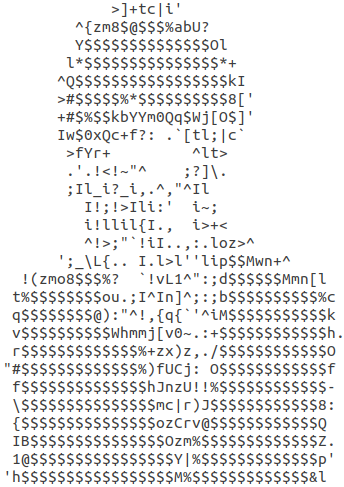1 from PIL import Image # 安装 见https://www.cnblogs.com/yuzhen0228/p/13330536.html 2 3 ascii_char = list("$@B%8&WM#*oahkbdpqwmZO0QLCJUYXzcvunxrjft/|()1{}[]?-_+~<>i!lI;:,"^`'. ") # 字符从深到浅 4 length = len(ascii_char) 5 img = Image.open('demo.png') 6 (width, heigth) = img.size 7 img = img.resize((int(width * 0.1), int(heigth * 0.05))) # 缩小,便于字符画的展示 8 print(img.size) # 打印字符画的宽和高 9 10 11 def covert(img): 12 # img = img.convert("L") # 彩图直接灰度化 13 txt = "" 14 imode = list(img.getbands()) 15 print(imode[-1]) 16 for i in range(img.size[1]): # 高,也就是行 17 for j in range(img.size[0]): # 宽,也就是列 18 if imode[-1] == 'A': 19 r,g,b,a = img.getpixel((j, i)) 20 else: # imode[-1] == 'B' 21 r,g,b = img.getpixel((j, i)) 22 gray = int(r*0.299+g*0.587+b*0.114) # 得到该点的灰度 详情 https://blog.csdn.net/xdrt81y/article/details/8289963 23 txt += ascii_char[int(gray * (length-1)/256)] # 不同灰度分散到字符列表中的每个字符 24 txt += ' ' # 表示做完一行了 25 return txt 26 27 28 txt = covert(img) 29 f = open('demo.txt', 'w') 30 f.write(txt) 31 f.close()

